The Battle of the P67 Boards - ASUS vs. Gigabyte at $190
by Ian Cutress on January 20, 2011 4:15 PM EST- Posted in
- Motherboards
- Gigabyte
- Asus
- P67
Board Features
| Gigabyte P67A-UD4 | |
| Market Segment | Performance |
| CPU Interface | LGA 1155 |
| CPU Support | i3/i5/i7 Sandy Bridge |
| Chipset | P67 |
| Base Clock Frequency | 80 MHz to 200 MHz in 0.1 MHz increments |
| DDR3 Memory Speed | 1333 MHz by default, 800-2133 MHz supported |
| Core Voltage | Auto, 0.750V to 1.700V in 0.005V intervals |
| CPU Clock Multiplier | Dependant on CPU |
| DRAM Voltage | Auto, 0.90V to 2.60V in 0.020V intervals |
| DRAM Command Rate | Auto, 1N to 3N |
| Memory Slots |
Four 240-pin DDR3 DIMM slots in dual-channel Regular unbuffered DD3 memory Up to 32GB total supported |
| Expansion Slots |
2 x PCI Express 2.0 x16 slots (PCIe 1 operates at x16 in single mode, PCIe 2 operates at x8 in single mode, or x8/x8 in dual) 3 x PCI Express 2.0 x1 slots 2 x PCI slots Supports ATI Crossfire Supports NVIDIA SLI |
| Onboard SATA/RAID |
a) 2 x SATA 6.0 Gb/s ports (white) supporting RAID 0, 1, 5 and 10 b) 4 x SATA 3.0 Gb/s ports (black) supporting RAID 0, 1, 5 and 10 c) 2 x eSATA 3.0 Gb/s ports from Marvell 88SE9128, RAID 0, 1 a) + b) are capable of cross channel RAID 0, 1, 5, 10 |
| Onboard |
4 x SATA 3 Gb/s w/ RAID 2 x SATA 6 Gb/s w/ RAID 2 x eSATA 6 Gb/s w/ RAID 1 x Front panel audio header 1 x S/PDIF Out header 3 x USB 2.0/1.1 headers 1 x USB 3.0/2.0 header via Renesas (NEC) D720200 chip 1 x Serial port header 1 x Clearing CMOS jumper |
| Onboard LAN | Gigabit Ethernet via Realtek RTL8111E |
| Onboard Audio | 7.1 channel Realtek ALC892 codec |
| Power Connectors |
24-pin EATX Power connector 8-pin EATX 12V Power connector |
| Fan Headers |
1 x CPU fan header 2 x System fan headers 1 x Power fan header |
| I/O Panel |
1 x PS/2 keyboard/mouse port 1 x Coaxial S/PDIF Out connector 1 x Optical S/PDIF Out connector 8 x USB 2.0/1.1 ports 2 x USB 3.0/2.0 ports via Renesas (NEC) D720200 chip 2 x eSATA 6Gb/s ports 1 x RJ-45 port 8-channel Audio I/O ports |
| BIOS Revision | F7 Beta |
In the Box
- I/O shield
- SLI 3-slot bridge
- 4 x right-angled SATA connectors
Compared to the ASUS P8P67 Pro, both boxes do not come with much in the way of extra peripherals. Here we get an SLI 3-slot bridge (compared to the 2-slot on the ASUS) but lose the USB 3.0 rear bracket, meaning that one will have to be obtained in order to use the USB 3.0 header on the Gigabyte board.
Software
Smart 6
Smart 6 tries to encapsulate a good portion of the myriad of software available in easy-to-use quick buttons, and is essentially identical to the X58 and P55 iterations of the software. The QuickBoot portion attempts to speed up boot times by bypassing the lengthy BIOS post, assuming there has been no physical hardware change. QuickBoost is a single screen overclocking utility, similar to the EasyTune6 front page. Recovery2 helps roll back the system to a previous set of settings without predefinition of a backup time flag, and also the TimeLock, which is almost superfluous given Windows7 has Parental Controls.
The idea behind TimeLock is similar to that on the Xbox360 parental controls – specify a certain number of hours per day (in this case, two different values for weekdays and weekends) for which the computer can be in use.
@BIOS
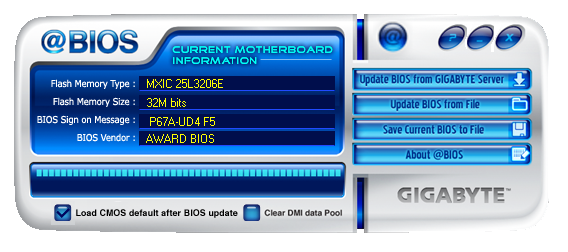
@BIOS is the staple Gigabyte BIOS update utility, and has been for a few iterations now. Users should note that to flash the latest BIOS files, the version of @BIOS on the CD is insufficient, and @BIOS 2.1 is required. 2.1 can be downloaded from the Gigabyte website.
Dynamic Energy Saver 2
Another program that Gigabyte has been using on various chipsets is the Dynamic Energy Saver 2. As you can see from the picture, various power saving features can be enabled or disabled through user settings, or you can let the software determine the best course of action.
EasyTune6
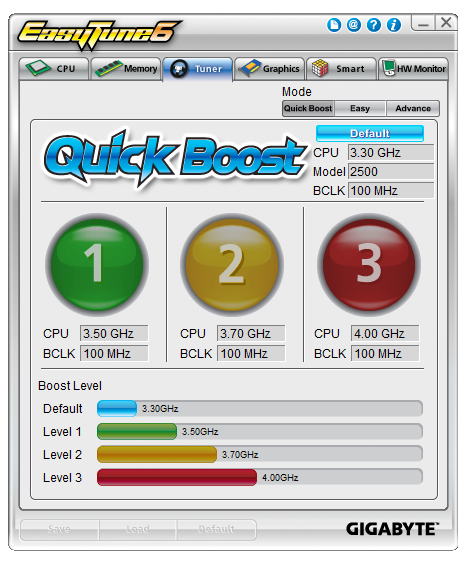
The OS overclocking tools are predominantly housed in EasyTune6. The front screen has those easy to use OC buttons, but only having three up to 4 GHz is somewhat limiting on the Sandy Bridge platform, given that most processors will happily do 4.4 GHz plus. There is no system of auto-overclocking detection similar to the ASUS boards.

Despite the software having an option for ‘real time ratio change’, of which there is an option in the BIOS to enable/disable, I could not get this to work. Upon setting a new multiplier, I was asked to reboot to apply it.
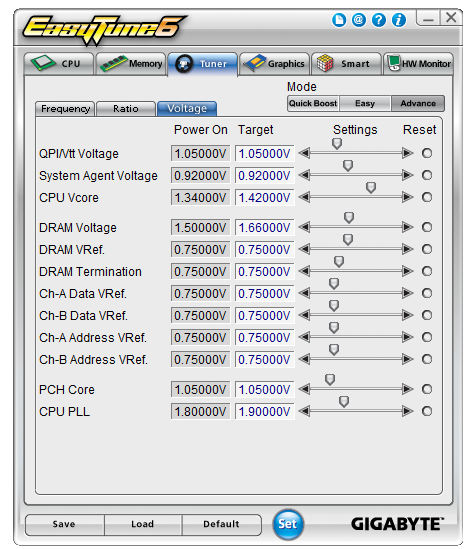
As always with EasyTune6, going to advance mode allows voltage manipulation. While it is nice to have such a wide variety of options, given that for Sandy Bridge all you really need is CPU VCore, DRAM and CPU PLL, it would have been easy just to include those in the ‘easy’ mode.

Fan control is basic in EasyTune6. Even in advanced mode, as shown above, you can choose where to put the initial and final ramp positions in terms of temperature against max RPM, but there is no option to define further points on the curve, or no determination of separate fans, so all chassis fans will be controlled by this one profile.



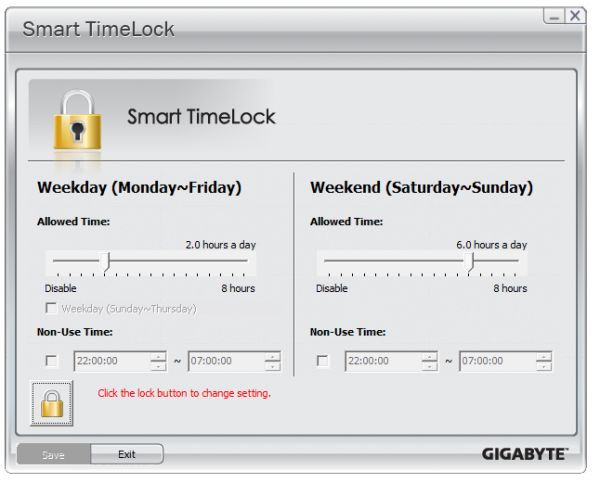
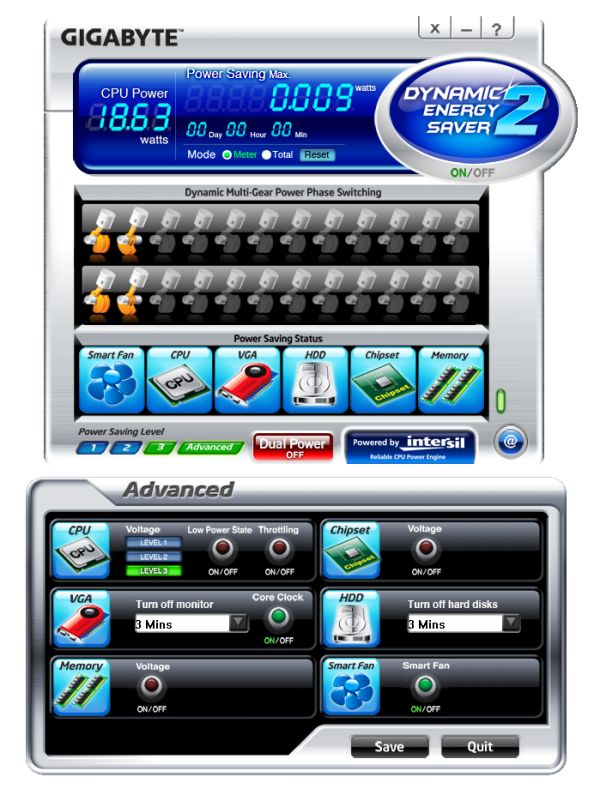








137 Comments
View All Comments
erple2 - Friday, January 21, 2011 - link
Technically, there has simultaneously always and never been a "perfect storm" of price and performance. Things always get faster at the same price point over time.As a commenter above pointed out, while these machines may be able to decode stuff quickly (and I'm guessing the 2600k will be faster), when their "system price" comes down to whatever sweet spot you are targeting, we'll have additional things we want to do with our computers (3D movies, 4K HD, 8K hD etc) that will tax these beyond what we consider "reasonable" today.
Ultimately, things ALWAYS get cheaper for the same level of performance and/or do more with the same cost. That's what progress "mandates". Unfortunately, we demand more things to be done, so the perceived amount of extra work you can do never really seems to go down. I used to be happy running a 386-DX40 in the DOS days. Things seemed fast and speedy then. I acknowledge that I do more today than I did back then, though I'm not sure if that's because the software does more, rather than I do more.
My advice - pick a budget and when you can no longer reasonably do what you now do, then buy with an eye to the future. I picked a fairly high budget, but I wanted to get a 'significant' upgrade that would still be usable 3 years in the future. My Core2Duo lasted from 2007 until the end of 2010, when I (foolishly) bought an i7-950.
marc1000 - Friday, January 21, 2011 - link
and in the 067 boards we can't use the encoding abilities from Sandy Bridge, because the on-chip GPU is turned-off in this chipset. so the only value in $150 boards is x8/x8 PCIe (cheaper boards cut this to x16/x4, a stupid thing but the only way to force us to spend more).medi01 - Saturday, January 22, 2011 - link
Which "encoding abilities" are we talking about, please? Shamelessly hyped increased speed, achieved at the cost of quality loss, eh?Beenthere - Thursday, January 20, 2011 - link
Asus has a long history of delivering half-baked goods - which this review confirms has happened once again. That and the fact that Asus provides zero customer support in my and many other customer's experience, means I'll vote with my wallet and get the Gigabyte mobo. I know the Asus fanbois will ignore the product defects and buy the Asus mobo anyway because of some review which shows it will OC by 2 Hz. more or something insignificant. This is how Asus dupes the naive kids.Rick83 - Thursday, January 20, 2011 - link
Well, I'm monitoring the Gigabyte boards, and there's the same image as you'd expect from the ASUS side. Plus with the weird BIOS-flash thing happening on all the boards, and the features that are missing on the Gigabyte boards, I think I'll take an ASUS this time around. (Though any board will be a step down from my brilliant IP35 Pro.... RIP ABIT)Digital Audio Inputs seem to have died out completely....
In the end, I think I'll go with the microATX ASUS in the new Fortress FT3 by Silverstone...
SmCaudata - Thursday, January 20, 2011 - link
I want to do the same build. I'm hoping for a new GENE or equivalent ASrock board. The FT3 looks like it can handle SLI well. Would be fun to build that powerful of a system in w small package and still have awesome thermals.Gothmoth - Thursday, January 20, 2011 - link
gigabyte boards make way more trouble then asus boards.don´t remind me on the samsung drives or hitachi drives that would not work for 8 month with gigabyte boards.
take a look at gigabytes support forum and you will see how "happy" the gigabyte users are. LOL.
milkyway4me - Thursday, January 20, 2011 - link
Asus does advance RMA, gigabyte doesn't. That and that alone, is why any reasonable person should choose Asus barring some massive issue that sticks out to them.Duwelon - Thursday, January 20, 2011 - link
And i've had the exact experience with Asus and Gigabyte. Last 3 computers I built all used Gigabyte board. 1 bad video card (fanless gigabyte 4550 and they replaced it with a geforce 9600gt with a fan... gee thanks for the downgrade in performance and features and upgrade in noise, thanks so very much). 1 Gigabyte board is acting up, the NIC keeps disappearing without a trace, had to install a PCI NIC to keep it on the network. I friggin hate Gigabyte's RMA process, but they're still better than some i've had to use. Asus, never had a problem with their RMA and they were a little faster than Gigabyte from what I remember. To each their own, sadly they both have flaws and neither are much better than the other. Overall though, given my recent screwing over by Gigabyte and recent issues, my pendulem is swinging towards Asus again.seamusmc - Friday, January 21, 2011 - link
I've had boards from all major vendors, ASUS, Intel, Gigabyte, Abit, DFI, etc. They've all had duds and they've all had great boards. I currently have 4 ASUS x48 Rampage's, (Home Server, Work, Wife and Game), and it is one of my favorites among many favorites. ASUS CULV is another stand out in my memory.In my experience, ASUS hasn't delivered more half-baked goods then anyone else.
Right now, it seems to me all the boards are having issues and that's to be expected with a new chipset. This is why I decided last month, despite my unquenchable hunger to upgrade, to wait at least until Feb to upgrade. At this point I may wait until March.